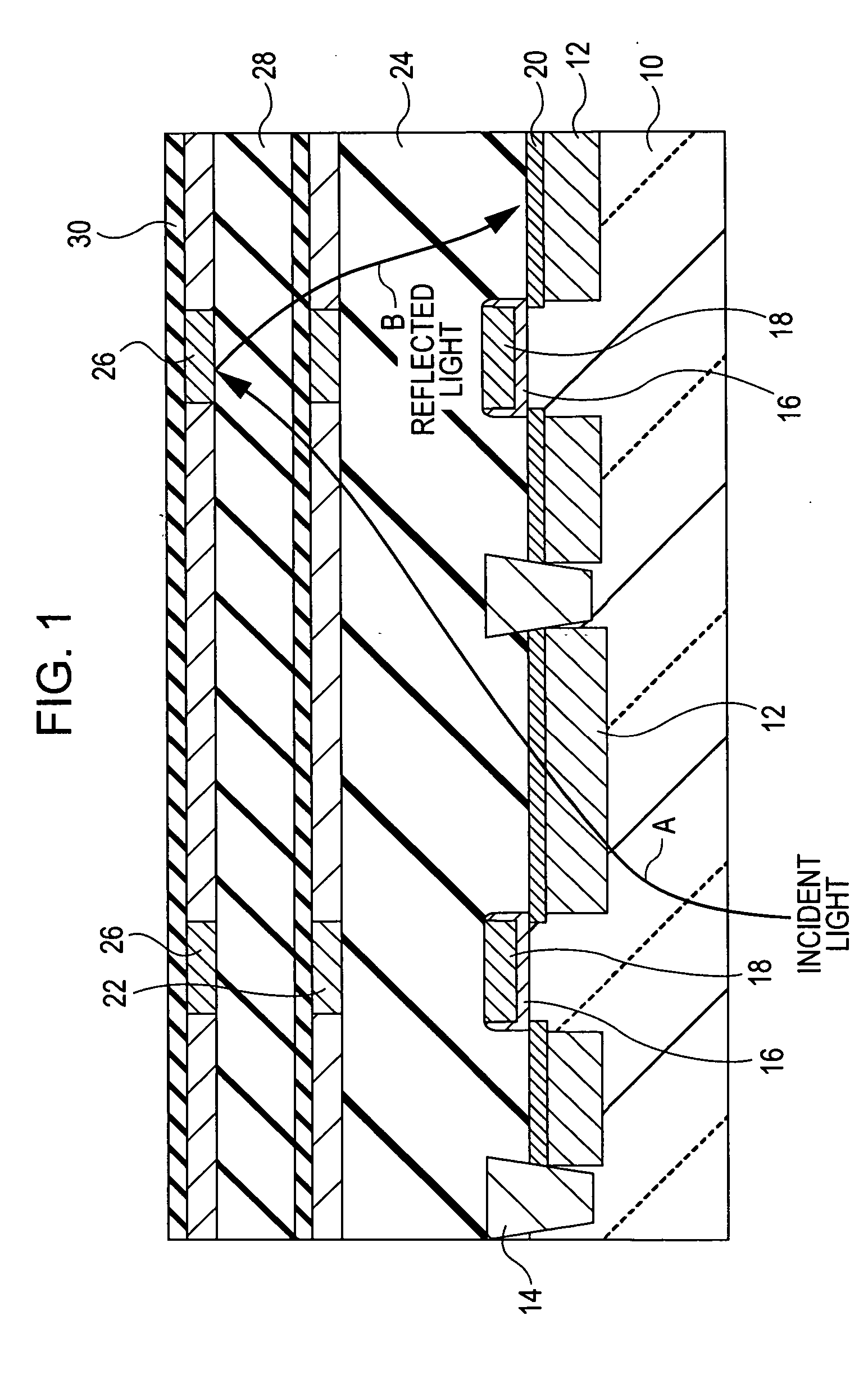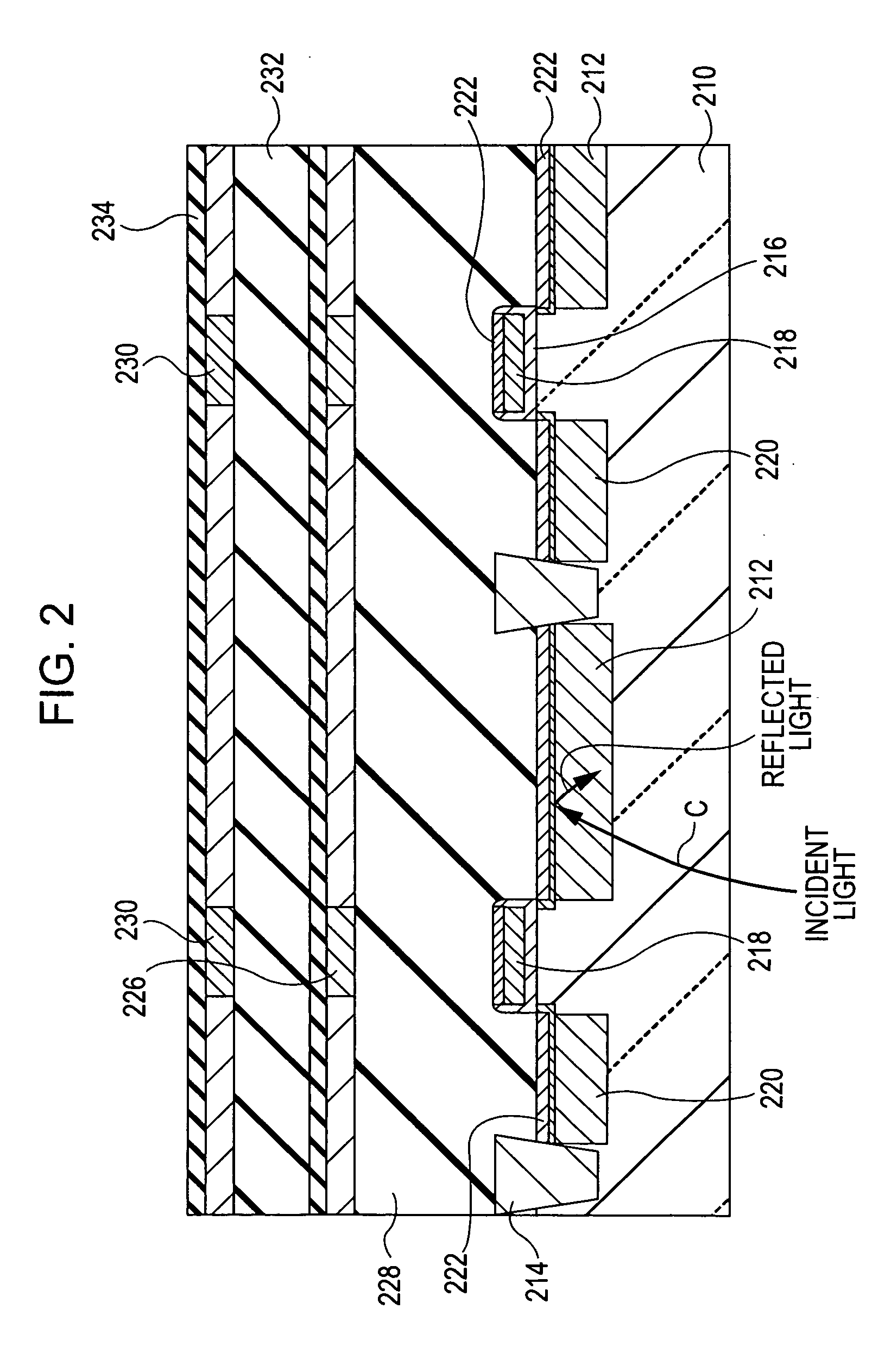Solid-state imaging device
- Summary
- Abstract
- Description
- Claims
- Application Information
AI Technical Summary
Benefits of technology
Problems solved by technology
Method used
Image
Examples
example 1
[0032]FIG. 2 is a cross-sectional view showing an example of a structure of a solid-state imaging device according to Example 1 of the present invention, and FIG. 3 is a circuit diagram showing an example of a configuration of a circuit region (pixel transistor circuit) in the solid-state imaging device shown in FIG. 2. FIGS. 4 to 12 are cross-sectional views each showing a specific example of a method for fabricating the solid-state imaging device shown in FIG. 2.
[0033] First, as shown in FIG. 3, in the solid-state imaging device according to this example, each pixel is provided with a photodiode (PD) 100 functioning as a photoelectric conversion section, a reset transistor 110 for resetting charges accumulated in the photodiode 100, an amplifier transistor 120 for amplifying and outputting pixel signals corresponding to the amount of accumulated charges, a transfer transistor 130 for selecting the timing of transfer of signal charges accumulated in the photodiode 100 to the gate ...
example 2
[0043]FIG. 13 is a cross-sectional view showing an example of a structure of a solid-state imaging device according to Example 2 of the present invention. The same reference numerals are used to designate the same elements as those shown in FIG. 2.
[0044] In Example 2, in place of the silicide films described above, light-shielding dummy wiring films 500 are disposed as films that prevent transmission of light.
[0045] As shown in FIG. 13, the light-shielding dummy wiring films 500 are disposed in the lowest layer under the layers in which wiring films having the original function are disposed. An interlayer insulating film 501 is disposed thereunder. The dummy wiring films 500 are not composed of a material that transmits light, such as polysilicon, but are composed of a metal, such as tungsten or aluminum, or composed of an alloy. As shown in FIG. 13, the dummy wiring films 500 are formed in a pattern corresponding to light-receiving regions of the photodiodes. In Example 2, as ind...
example 3
[0046]FIG. 14 is a cross-sectional view showing an example of a structure of a solid-state imaging device according to Example 3 of the present invention. The same reference numerals are used to designate the same elements as those shown in FIG. 2.
[0047] In Example 3, as films that prevent transmission of light, interlayer films having a light-absorbing property are used.
[0048] As shown in FIG. 14, interlayer insulating films 510 and 520 are disposed between the silicon substrate and a first wiring film layer and between the first wiring film layer and a second wiring film layer, respectively. These interlayer insulating films 510 and 520 serve as light-absorbing films. Specifically, for example, silicon carbide (SiC) may be used.
[0049] By providing such interlayer insulating films 510 and 520, as indicated by an arrow E in FIG. 14, even if light that has entered from the backside reaches the front side of the substrate, light is absorbed by the interlayer insulating films 510 an...
PUM
 Login to View More
Login to View More Abstract
Description
Claims
Application Information
 Login to View More
Login to View More - R&D
- Intellectual Property
- Life Sciences
- Materials
- Tech Scout
- Unparalleled Data Quality
- Higher Quality Content
- 60% Fewer Hallucinations
Browse by: Latest US Patents, China's latest patents, Technical Efficacy Thesaurus, Application Domain, Technology Topic, Popular Technical Reports.
© 2025 PatSnap. All rights reserved.Legal|Privacy policy|Modern Slavery Act Transparency Statement|Sitemap|About US| Contact US: help@patsnap.com



